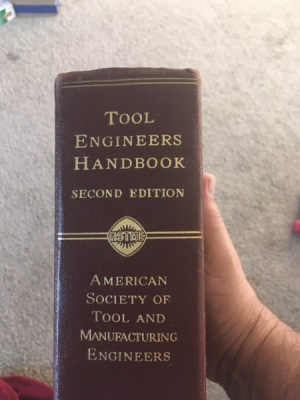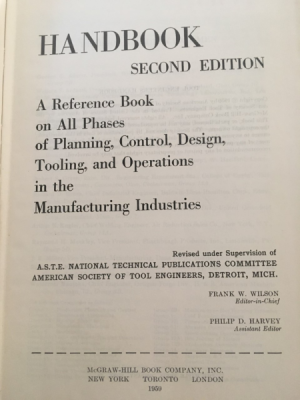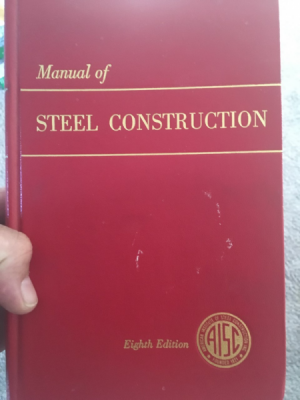The various editions do change over time. There is a lot of information in the older books, that was dropped from the later books. There is a lot of information in the newer editions that didn't exist when the older editions were written, and much that existed, but wasn't considered important to the MH audience (metric system for example).
Since the 1940s the book has remained roughly the same page count, the only way that has occurred is by eliminating "obsolete" information.
This website does a nice job of covering some of the differences, although it does not go into deep detail of the changes.
Machinery's Handbook, the Machinist's Bible, a 95 year tradition. Collective review of 28 editions. Anvilfire! Book Review.
www.anvilfire.com
I bought a 1953 edition because it includes a bunch of stuff about forging and blacksmithing that was gradually dropped during the 1960s-70s and is all but gone by the 1980s editions. On the other side, this version includes just a few pages on the basics of the metric system, and contains nothing else metric related, no metric fasteners etc.
I also have an early 90s edition which includes a lot of info on the metric system, metric fasteners, CNC and has info on newer materials not covered in my older book among other things.
In addition to the Handbook there is a small guide, that goes with it. The Handbook is a reference and assumes the user is knowledgeable about the subject. The guide is a learning assist that goes into greater detail on the information in the handbook. Not really needed for a professional, but I have found the guide helpful, since I don't have a formal machining education.
I agree that there are more user friendly references available, but the MH does have a ton of interesting material. If you are patient you can find other than the latest edition fairly cheap. I think I paid around $30 for my later handbook and guide set, and less than $50 for the 1950s handbook and guide.




